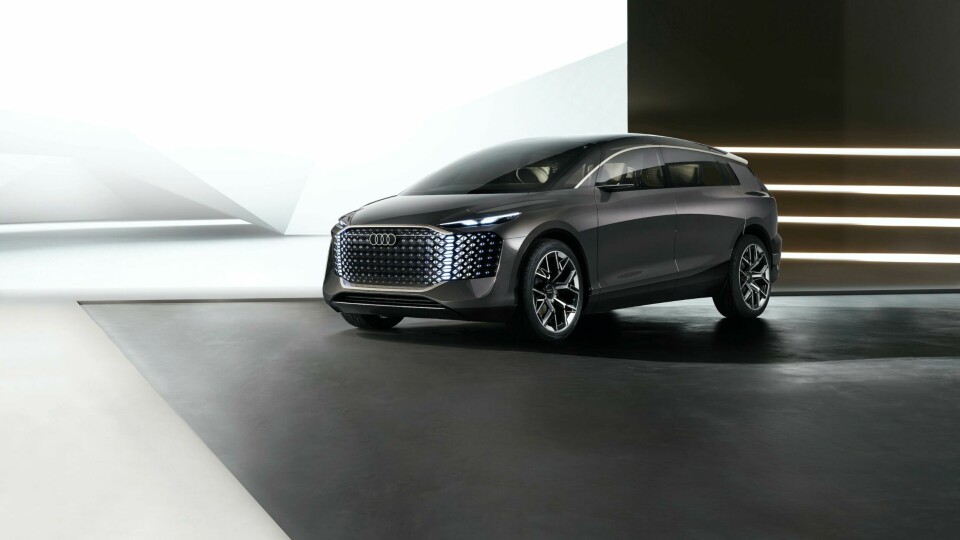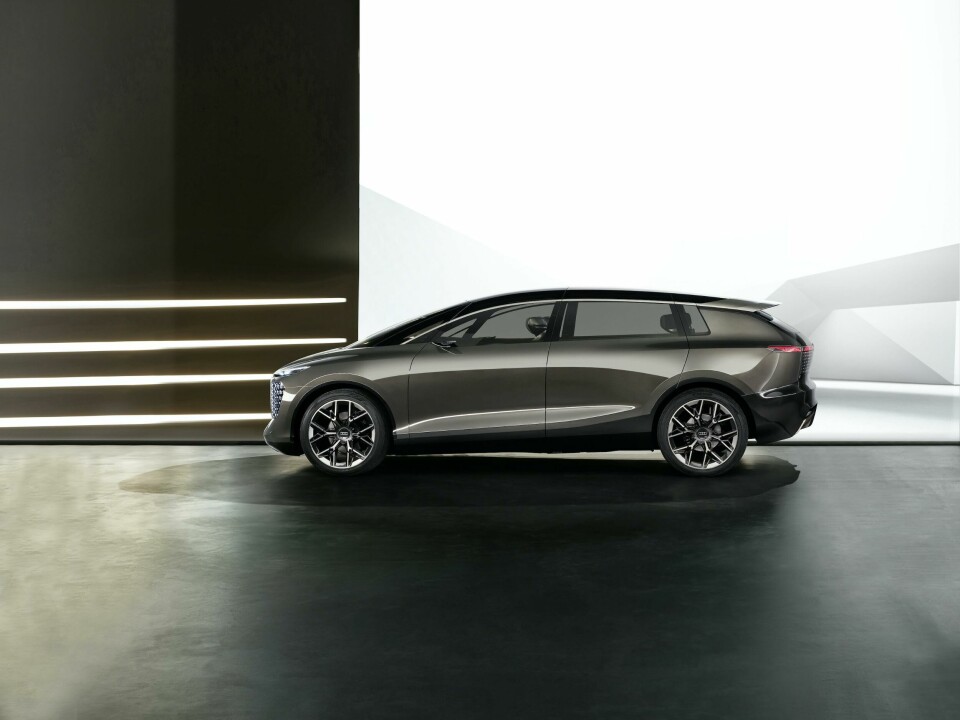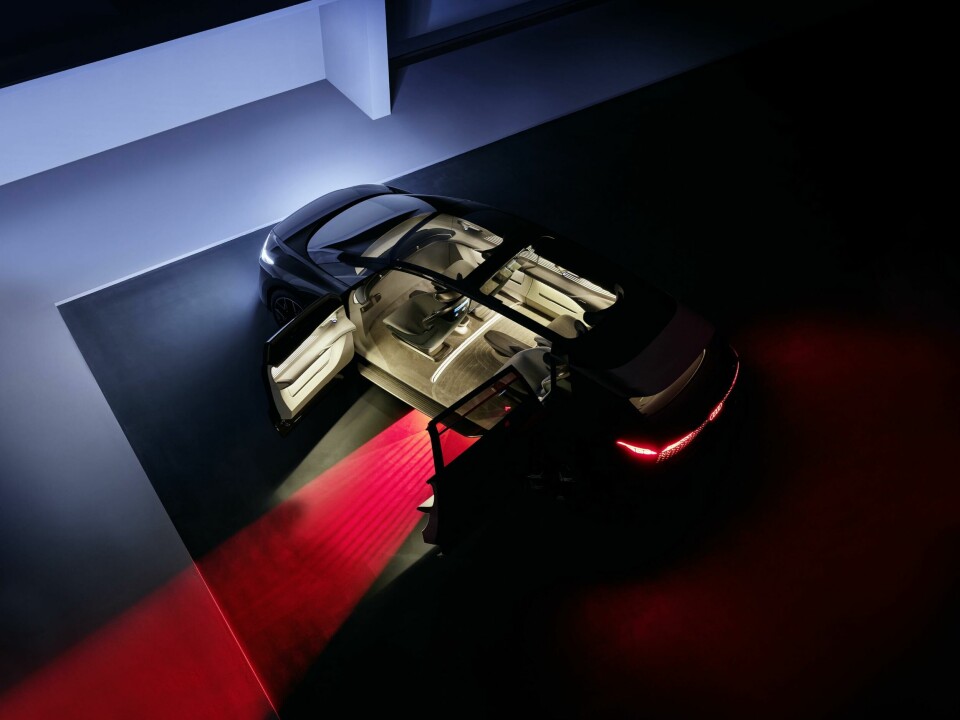
First Sight: Could Audi Urbansphere herald China MPV revival?
With the Urbansphere, Audi’s design team has turned the ’van-with-windows’ approach to the MPV on its head. Can this concept revive the segment?
Audi unveiled its Urbansphere concept on Tuesday 19th April 2022 to complete its recent ‘concept trilogy’ started by the Skysphere roadster at 2021’s Pebble Beach and continued with the Grandsphere GT at IAA Munich in September of the same year.
Like its two forebears, the Urbansphere is also a concept focused on autonomy – at Level 4 and more – where the vehicle handles all aspects of driving and a steering wheel is not necessary. But unlike smaller urban concepts designed to weave in and out of traffic and park in tight spots, Audi’s latest take on mobility for megacities is huge and MPV-like, has a decidedly Chinese focus and was developed with customers from that region.
At 5510mm long, 2010mm wide, 1780mm high and with a 3400mm wheelbase rolling on 24-inch wheels, the Urbansphere is by Audi’s own admission its largest ever concept car and by far the biggest vehicle it has created. By comparison the production A8 L long wheelbase limousine is ‘only’ 5320mm long with a 3010mm wheelbase, or to take a more MPV-like comparison, the Mercedes V-Class LWB is ‘just’ 5370 long and 1908mm high.

But unlike the latter ‘van-with-windows’, the designers of the Urbansphere have focused on pleasing fewer passengers with a more premium experience, especially those in the second row. In that part of the car a large, frameless and transparent OLED entertainment screen pivots down from the ceiling, and when not required tucks right back towards the roof and switches off, its see-through nature allowing light to flood in through the panoramic roof.
Even more novel is a wide-beam lighting effect on the floor that emanates from under the car when the doors open and the seats swivel to greet rear passengers. Coloured bright red, it provides a 21st century virtual take on the traditional physical ‘red carpet experience’ rolled out for special occasions and suggests that every ride in an Urbansphere could be too.

Despite Audi’s marketing department during the virtual press conference trying to declare the idea of designing a car ‘from the inside out’ as “a completely different approach” – the production 2003 Nissan Cube did the same nearly two decades before and there have been endless concepts since taking a similar tack – the actual designers of the Urbansphere concept were more modest and/or realistic. Both Christian Becker (interior) and Florian Liese (exterior) claimed to have enjoyed working with customers during the development of the concept, and although Liese said the process threw up “few surprises and more confirmations of our ideas’’ he did highlight two areas that were more important to Chinese customers than the design team had expected.
The first of those was entertainment, including video conferencing or gaming – “they wanted content and to be able to share it with others,” says Becker – and the second was health and well-being, especially technology that could calm and relax occupants. Thus features like voice analysis and eye movement scanners to judge mood and quickly learn preferences and suggest options are packed into the Urbansphere.
Aesthetically the interior appeals as a subtle and upmarket space, but also one that utilises sustainable materials. The seat padding is made from Econyl, a recycled polyamide that can be recycled again, and bamboo viscose fabric covers the rear armrests and is ethically sound as a fast-growing wood which captures carbon and doesn’t require pesticides.
As such a large ‘open-mouth’ front grille is now functionally redundant for EVs, Audi’s designers used that space to play with complex light signatures, as many car brands transforming to electric have also done in the last few years on their concepts. However, on the Urbansphere there is some new innovation, including lights that imitate the human eye by narrowing or widening each pixelated ‘iris’, and a ‘digital eyebrow’ that can double up as a turn signal.

Underpinning the Urbansphere is Audi’s Premium Platform Electric (PPE). It is designed to accommodate only electric powertrains with twin motors – one on each axle – able to deliver a total of 401hp, combined with battery packs of up to 120kW and 800-volt charging capability. This translates to a 466-mile range and quicker refuelling, taking 10 minutes to get to 186 miles and 80% capacity in 25 minutes. Despite those longer-range range figures, Audi’s designers also foresee smaller battery variants and shorter-range options, as the car has been primarily designed for megacities – especially Chinese ones – where journey times are longer and distances travelled shorter.
Don’t suggest the Urbansphere represents the return of the MPV to the Audi designers though – “we weren’t thinking in those terms” said Liese. He’s right. Even though it looks a lot like one in shape, it arguably doesn’t have enough of the ‘multi-purpose’ attributes of the original 1980s and 90s ones with their folding-into-the-floor seats and complex storage options, which denoted the M and P of that set of initials. Still, although only from afar so far, the Urbansphere appears to be a well-made and sophisticated design, and one that very sensibly took into consideration the views of customers from the biggest car market in the world.










